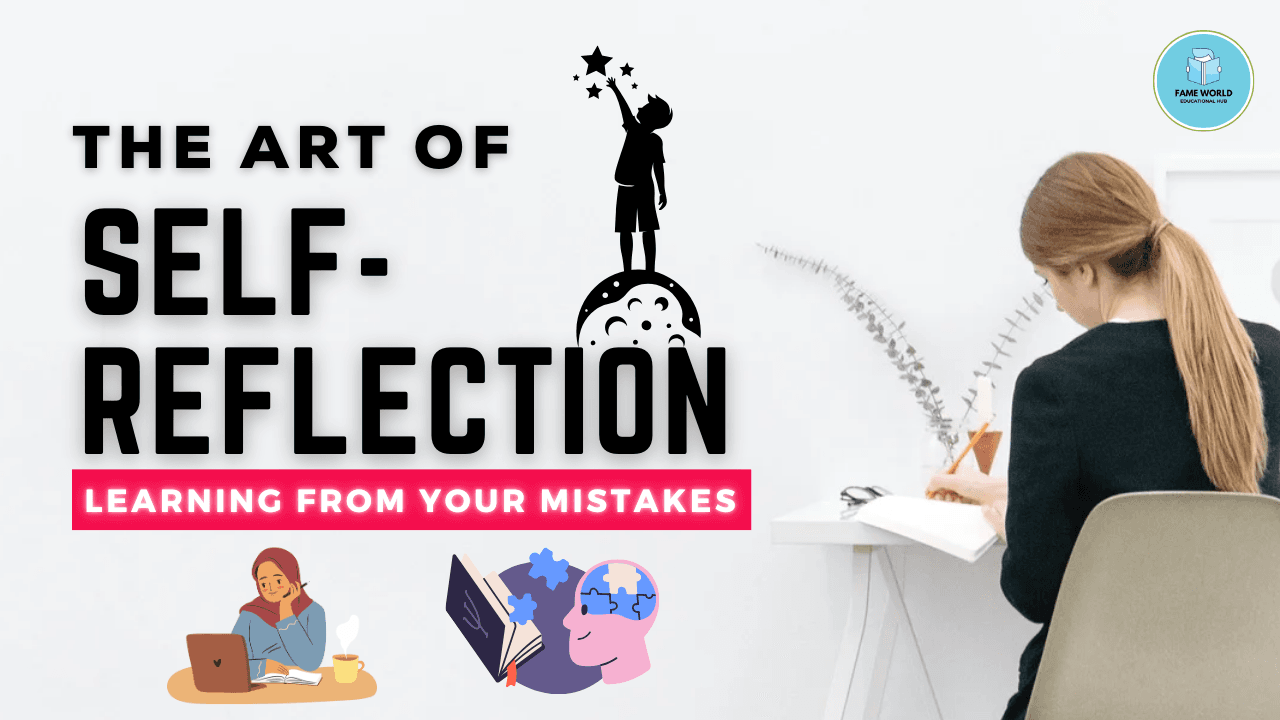We all make mistakes. Sometimes they’re small; sometimes they’re significant, leaving a lasting impact. But every mistake holds a lesson, and with self-reflection, those lessons can shape our journey in profound ways. Self-reflection is a powerful tool for personal growth, allowing us to learn, adapt, and make better choices in the future. In this blog post, we’ll explore the art of self-reflection, why it’s essential, and practical steps to start embracing it in your life.
Why Self-Reflection Matters
Self-reflection is more than just dwelling on the past; it’s about digging deep to understand our choices, emotions, and actions. Here are some key reasons why self-reflection is vital:
- Clarity and Understanding: When we reflect on our experiences, we better understand why we acted a certain way, helping us identify patterns or triggers behind our actions.
- Learning and Growth: Mistakes often carry valuable lessons. By analyzing them, we can gain insights that prevent similar issues in the future.
- Empathy and Patience: Reflecting on our own actions can lead to a better understanding of ourselves and, in turn, can help us be more patient and empathetic toward others.
- Better Decision-Making: Self-reflection helps sharpen decision-making skills, as we become more aware of what drives us, what we truly value, and how our actions align with our long-term goals.
Steps to Effective Self-Reflection
Self-reflection requires intention, honesty, and a willingness to face uncomfortable truths. Here’s a guide to help you dive into meaningful self-reflection:
Step 1: Set Aside Time for Reflection
Find a quiet place where you won’t be disturbed. Schedule regular “check-in” times for self-reflection, whether it’s daily, weekly, or monthly. The key is consistency, so find a rhythm that works for you.
Tip: Start small! Even a few minutes each day can have a big impact.
Step 2: Identify the Mistake or Experience
Choose a recent experience or a recurring pattern of behavior. Be specific—vague reflection won’t yield helpful insights. Identify exactly what happened, how you felt, and why it stands out.
Example Prompt: “I reacted defensively in a meeting last week. Why did I feel the need to defend myself? Was I feeling insecure or misunderstood?”
Step 3: Reflect on the ‘Why’
Ask yourself why you made the choices you did. Were there external pressures? Were you stressed, tired, or preoccupied? Digging into the “why” helps reveal the underlying factors that influenced your actions.
Reflection Prompts:
- “What was I feeling at the time?”
- “What fears or insecurities might have influenced my response?”
- “Was there an expectation or belief that drove my behavior?”
Step 4: Identify the Lesson
Now that you’ve analyzed the mistake, think about what you’ve learned. What would you do differently next time? Recognizing the lesson is essential for turning mistakes into growth opportunities.
Example Insight: “I learned that my defensive reaction was tied to a fear of being seen as inadequate. Next time, I’ll take a deep breath and try to listen to feedback objectively.”
Step 5: Set Intentions for Future Actions
Self-reflection is only valuable if it leads to action. Set clear, achievable goals based on your reflections. What specific changes will you make to handle a similar situation better next time?
Goal Example: “Next time I feel defensive, I’ll pause, take a breath, and remind myself that feedback is a tool for improvement, not a judgment.”
Tools for Self-Reflection
Several tools can help deepen your self-reflection practice:
- Journaling: Writing down your thoughts can be a powerful way to process experiences.
- Mindfulness Meditation: This practice can help you stay present and more aware of your emotions as they arise.
- Accountability Partner: Sharing your reflections with a trusted friend or mentor can offer valuable feedback and perspective.
- Reflection Apps: Apps like Day One, Reflectly, or Penzu offer prompts and help you track your self-reflection journey.
How to Move Forward After Reflecting
After reflecting, it’s important to let go of lingering negative emotions. Holding onto guilt or shame can hinder your growth, so practice self-compassion. Remind yourself that mistakes are part of the learning process, and everyone experiences setbacks. Forgive yourself, and carry your new insights forward with confidence.
Common Obstacles in Self-Reflection and How to Overcome Them
Being Too Hard on Yourself: Self-reflection should be constructive, not punitive. If you notice you’re being overly critical, focus on being gentle and understanding with yourself.
Overthinking and Dwelling on the Past: Remember, the goal isn’t to obsess over mistakes but to learn from them. Set a time limit if needed, then move forward.
Fear of Facing the Truth: Self-reflection can be uncomfortable, but remember, growth often happens outside your comfort zone. Approach it with courage and curiosity.
Celebrating Your Progress
As you start making self-reflection a habit, celebrate your growth and resilience! Over time, you’ll notice patterns, develop healthier reactions, and become more in tune with your values and aspirations. Self-reflection is a lifelong practice, so embrace it with patience and pride.
Conclusion
The art of self-reflection is a journey of self-discovery, growth, and empowerment. By learning from your mistakes, you’re not just preventing future missteps—you’re cultivating a deeper understanding of yourself and becoming the best version of who you are. Embrace your mistakes as part of the process and allow them to guide you toward a brighter, more self-aware future.
Ready to start reflecting? Grab a notebook or find a quiet corner and take the first step today.



